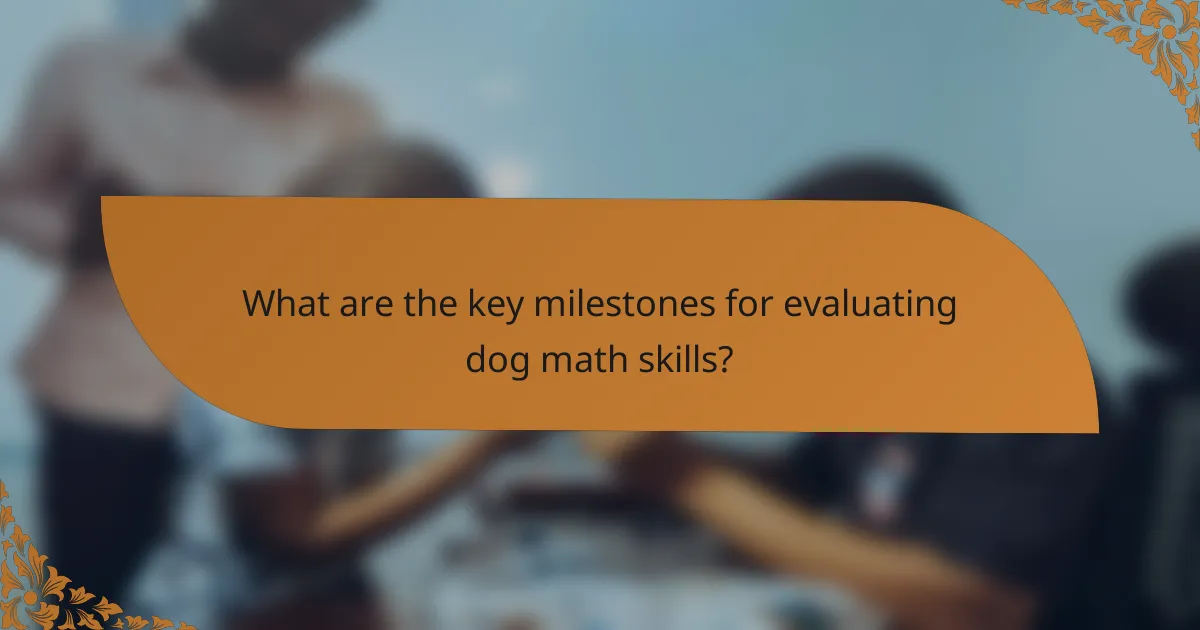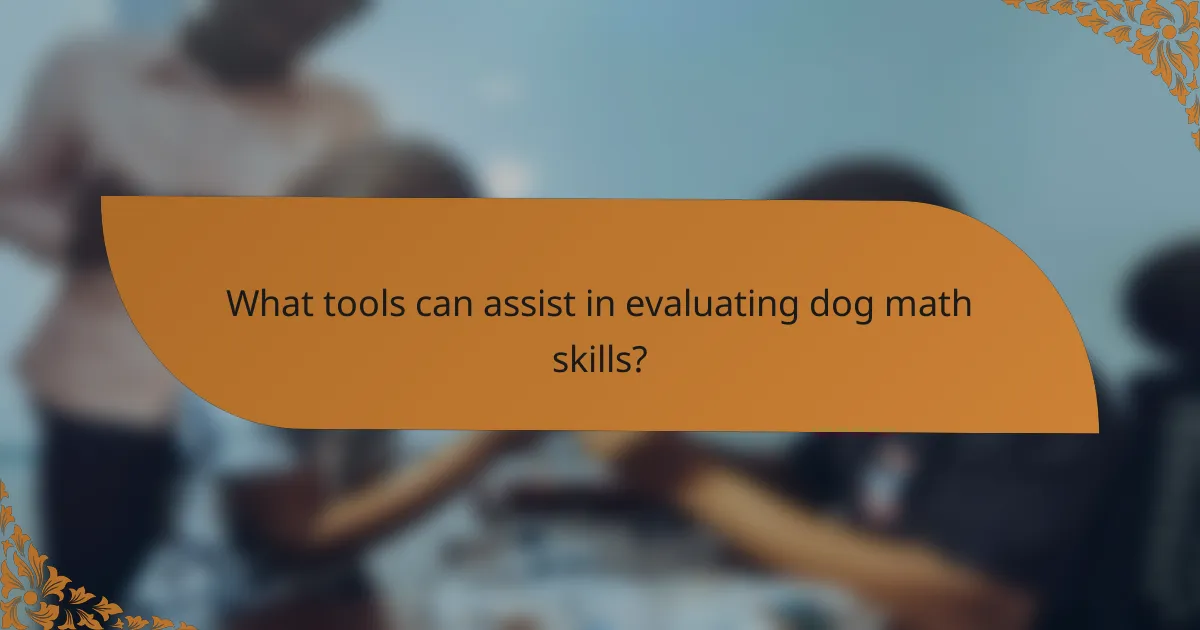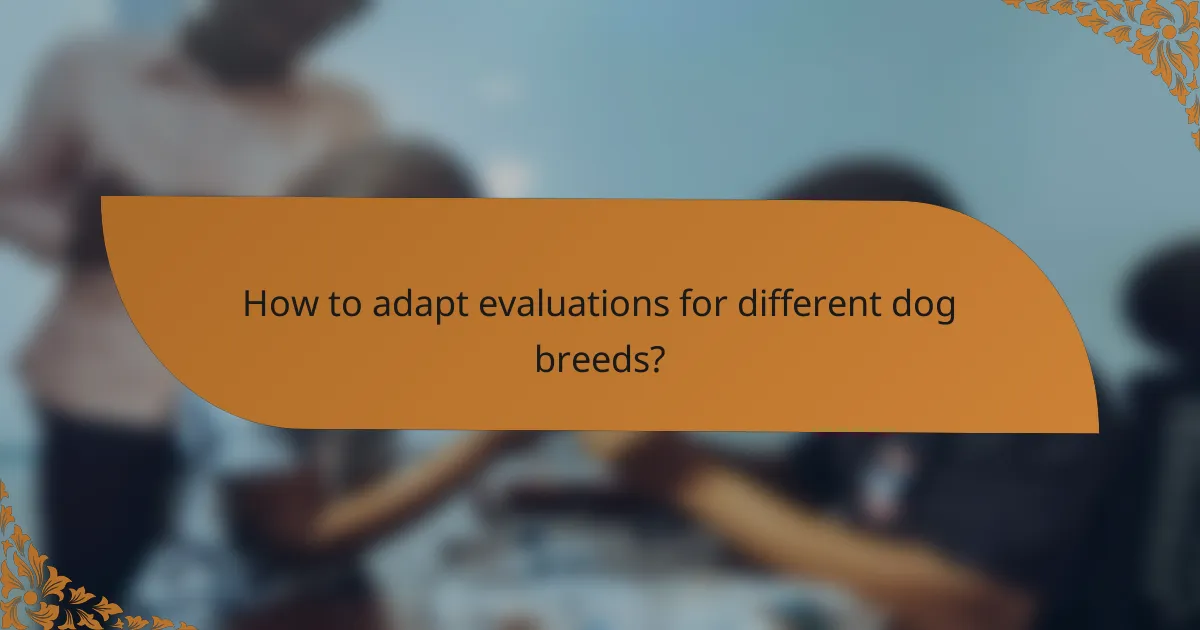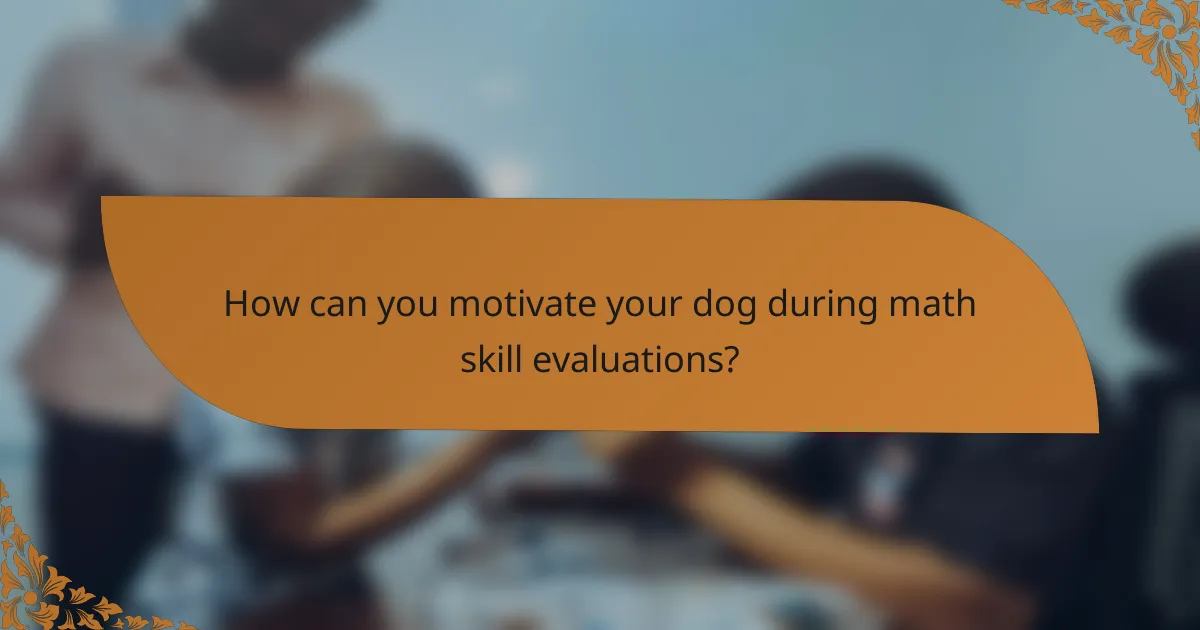Using milestones to evaluate your dog’s math skills can be a rewarding approach to enhancing their learning experience. By establishing clear goals and breaking down complex concepts, you can effectively guide your dog through basic numerical ideas. Observing specific milestones, such as counting recognition and simple addition tasks, allows you to track their progress and identify areas for improvement.

How can milestones improve your dog’s math skills?
Milestones can significantly enhance your dog’s math skills by providing clear goals and structured learning paths. By breaking down complex concepts into manageable steps, you can help your dog grasp mathematical ideas more effectively.
Structured learning through milestones
Structured learning utilizes milestones to create a framework for teaching math concepts to dogs. For example, you might start with basic counting exercises using treats, gradually increasing the complexity as your dog masters each level. This approach helps dogs learn at their own pace while ensuring they build a solid foundation.
Consider setting specific milestones such as recognizing numbers, performing simple addition, or even understanding basic subtraction. Each milestone should be achievable within a few training sessions, allowing for consistent reinforcement and motivation.
Tracking progress effectively
Tracking progress is essential to evaluate how well your dog is developing math skills through milestones. Keep a simple log of your dog’s achievements, noting when they successfully complete each milestone. This not only helps you see their growth but also allows you to adjust your training methods as needed.
Use a checklist to monitor progress, including items like “Recognized numbers 1-5,” “Completed addition with treats,” or “Understood subtraction with toys.” Regularly reviewing this checklist can help you identify areas where your dog may need additional practice or support.

What are the key milestones for evaluating dog math skills?
Evaluating your dog’s math skills involves observing specific milestones that indicate their ability to understand basic numerical concepts. Key milestones include basic counting recognition, simple addition tasks, and subtraction understanding.
Basic counting recognition
Basic counting recognition is the first milestone in assessing a dog’s math skills. This involves the dog’s ability to recognize and respond to a small number of objects, typically ranging from one to five. For instance, if you place two treats in front of your dog, they should be able to identify that there are two items.
To test this skill, you can use toys or treats. Show your dog a certain number of items, then remove one while they are not looking. When they return, see if they can identify that one item is missing. This simple exercise helps gauge their counting ability.
Simple addition tasks
Simple addition tasks evaluate a dog’s understanding of combining quantities. This can be demonstrated by presenting your dog with a certain number of treats, then adding more while they watch. For example, if you start with two treats and add one more, your dog should recognize that there are now three treats available.
To effectively assess this, use a straightforward approach. Start with small numbers and gradually increase the quantity as your dog becomes more adept. Keep the environment distraction-free to ensure your dog can focus on the task at hand.
Subtraction understanding
Subtraction understanding measures a dog’s ability to comprehend the removal of items from a set. This can be tested by showing your dog a group of treats, then taking one away while they observe. For instance, if you show them four treats and then take one away, they should recognize that only three remain.
When conducting this test, ensure that your dog is attentive and engaged. Use clear visual cues and praise to reinforce their understanding. This milestone is crucial as it demonstrates not only recognition of numbers but also the concept of quantity change through subtraction.

How to implement milestone assessments for dogs?
Milestone assessments for dogs involve setting specific goals to evaluate their math skills through engaging activities. These assessments can help you track your dog’s progress and identify areas for improvement.
Using interactive toys
Interactive toys can serve as effective tools for assessing your dog’s math skills. These toys often require your dog to solve simple problems, such as figuring out how to retrieve treats hidden inside. Look for toys that challenge your dog without causing frustration.
When selecting interactive toys, consider options that offer varying levels of difficulty. Start with simpler designs and gradually introduce more complex ones as your dog masters each level. This approach helps maintain your dog’s interest and encourages ongoing learning.
Incorporating treats as rewards
Using treats as rewards during milestone assessments can significantly enhance your dog’s motivation to engage with math-related tasks. Positive reinforcement encourages your dog to participate and learn, making the assessment process enjoyable for both of you.
To effectively incorporate treats, establish a clear reward system. For example, reward your dog immediately after they successfully complete a task, reinforcing the connection between their actions and the reward. Be mindful of portion sizes to avoid overfeeding, and consider using low-calorie treats to keep your dog healthy while learning.

What tools can assist in evaluating dog math skills?
Several tools can help assess your dog’s math skills, including interactive apps and specialized training platforms. These resources provide structured activities and feedback to gauge your dog’s understanding of basic mathematical concepts.
Interactive apps for dog training
Interactive apps designed for dog training often include math-related games that challenge your pet’s cognitive abilities. These apps can feature tasks like counting treats or solving simple puzzles that require basic arithmetic skills. Look for apps that offer a variety of levels to keep your dog engaged and progressively challenge their abilities.
When choosing an app, consider user reviews and the app’s adaptability to different learning styles. Some popular options may include features like progress tracking, which can help you monitor your dog’s improvement over time.
Training platforms like Pupford
Training platforms such as Pupford provide comprehensive resources for evaluating and enhancing your dog’s math skills through structured lessons. These platforms often include video tutorials and interactive exercises that focus on problem-solving and cognitive challenges. They may also offer community support, allowing you to share experiences and tips with other dog owners.
Utilizing these platforms can help you establish a routine for your dog’s training. Set aside regular time each week to work on math exercises, and be sure to reward your dog for their efforts to reinforce positive learning behaviors.

How to adapt evaluations for different dog breeds?
Evaluating a dog’s math skills requires adapting methods to suit various breeds, as their size, temperament, and learning styles can differ significantly. Tailoring your approach ensures more accurate assessments and a better experience for both you and your dog.
Tailoring methods for small breeds
Small breeds often have higher energy levels and quicker responses, making them suitable for fast-paced evaluations. Use short, engaging tasks that require minimal space, such as simple counting games with treats or toys. For example, place two toys in front of the dog and see if they can choose the one that corresponds to a number you call out.
Keep in mind that small dogs may become distracted easily. Limit evaluation sessions to around 5-10 minutes to maintain their focus. Always reward their efforts with praise or treats to reinforce positive behavior.
Adjusting techniques for large breeds
Large breeds typically have a calmer demeanor and may require more structured evaluations. Use tasks that involve more physical space, such as navigating through a series of obstacles while performing math-related commands, like counting steps or retrieving a specific number of items. For instance, ask them to bring you three balls from a pile.
Sessions for large breeds can be longer, ranging from 10-15 minutes, as they may have the patience to engage in more complex tasks. Ensure that the environment is safe and spacious, and provide ample breaks to prevent fatigue.

What are common challenges in assessing dog math skills?
Assessing dog math skills can be difficult due to various challenges that may affect the evaluation process. Key issues include distractions during training sessions and the variability in individual learning speeds among dogs.
Distractions during training
Distractions can significantly hinder a dog’s ability to focus during math skill assessments. Common distractions include noises, other animals, and even the presence of unfamiliar people. To minimize these distractions, conduct training sessions in a quiet, familiar environment.
Consider using a controlled setting where you can gradually introduce distractions once the dog has mastered basic tasks. This approach helps gauge their ability to perform math skills under varying conditions.
Variability in individual learning speeds
Each dog has a unique learning pace, which can complicate the assessment of their math skills. Some dogs may grasp concepts quickly, while others may take longer to understand basic tasks. Be patient and adjust your training methods to suit the individual dog’s needs.
To accommodate different learning speeds, break down tasks into smaller, manageable steps. This allows dogs to build confidence and gradually progress to more complex math skills without feeling overwhelmed.

How can you motivate your dog during math skill evaluations?
Motivating your dog during math skill evaluations involves creating a fun and engaging atmosphere. By incorporating play and positive reinforcement, you can encourage your dog to participate actively and enjoy the learning process.
Incorporating play into learning
Integrating play into math skill evaluations can make the experience enjoyable for your dog. Use toys or games that require problem-solving, such as puzzles that dispense treats when solved. This approach not only keeps your dog engaged but also reinforces their learning through fun interactions.
Consider setting up short, playful challenges that involve counting or simple problem-solving. For instance, hide treats in various locations and ask your dog to find a specific number of them. This method combines physical activity with mental stimulation, enhancing their learning experience.
Using positive reinforcement techniques
Positive reinforcement is crucial for motivating your dog during evaluations. Reward your dog with treats, praise, or playtime immediately after they successfully complete a task. This creates a positive association with the learning process and encourages them to repeat the behavior.
Be consistent with your reinforcement strategies. Use high-value treats that your dog loves, and ensure that rewards are given promptly to reinforce the desired behavior. Avoid using punishment, as it can lead to anxiety and hinder your dog’s willingness to engage in future evaluations.
